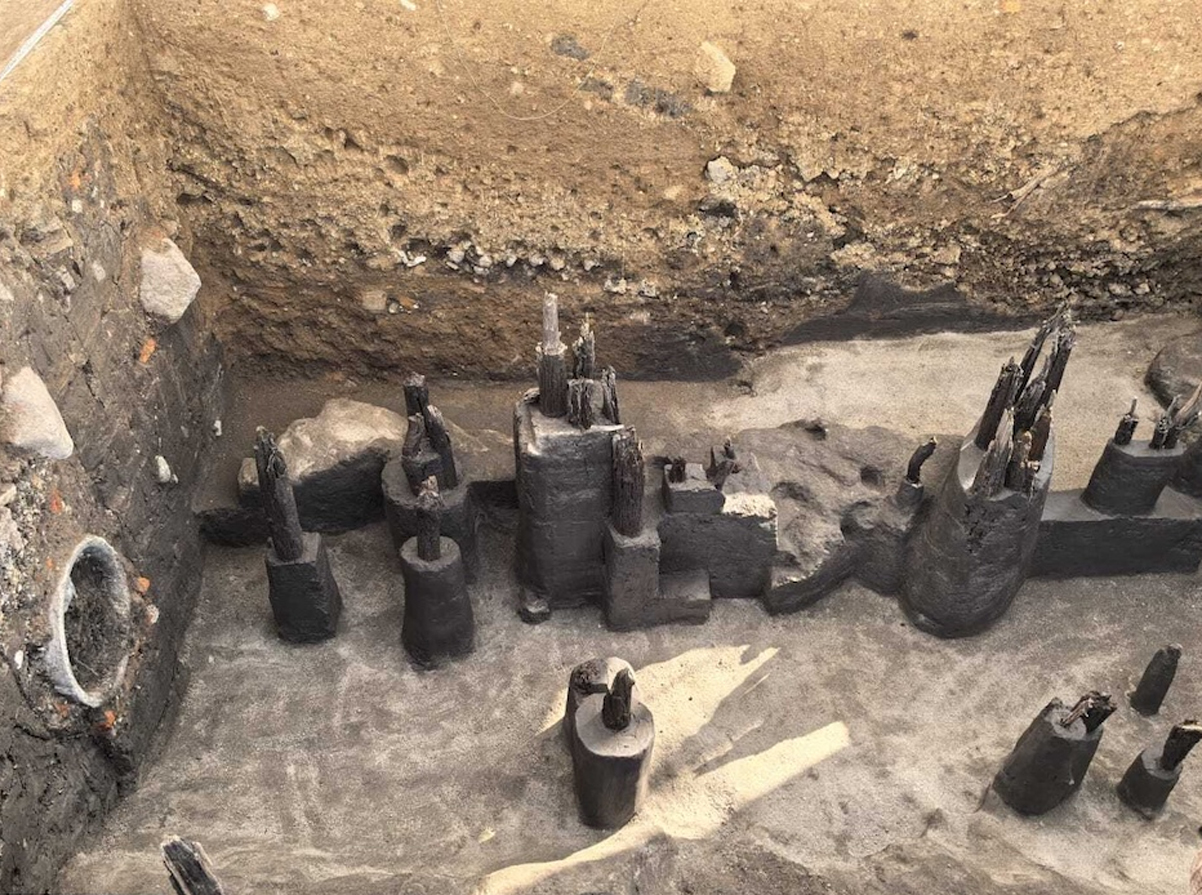Archaeologists from the National Institute of Anthropology and History (INAH) have uncovered a pre-Hispanic port beneath Chapultepec Avenue in Mexico City.
According to the archaeologists, the port originally stood on the shoreline of a peninsula at the base of Chapulín Hill, where previous investigations near the Ministry of Health uncovered traces of a pre-Hispanic settlement and a structure from the Late Postclassic period (AD 1200–1521).
The recent excavations found remnants of a dock and canal, where once a river flowed into Lake Texcoco, a natural lake within the Anahuac which was mostly drained following the Spanish Conquest.
Over the centuries, the stream was transformed into a navigable canal, then into a pipeline during the colonial era, and ultimately into the Chapultepec aqueduct in the mid-18th century, which carried water from the “Chapultepec pools” to the Salto del Agua fountain.
The canal is featured in the Santa Cruz Map (Also known as the Uppsala map), a mid-16th century map depicting Mexico City as the capital of New Spain, where it shows canoes in transit and other small vessels navigating the canal.
Lead excavator, Liliana Márquez Escoto, reported that the canal walls are lined with a pile construction, while the dock area situated in the centre of the canal has 40 transverse wooden piles that range from between 40 and 137 centimetres in height.
A preliminary analysis of the piles indicates that it was made from fir wood, known for its strength, durability, and water and rot-resistant properties. Botanical remains found in situ includes seeds, gastropods, and roots, suggesting that the inhabitants of the pre-Hispanic settlement lived partly on a diet of quelites, pumpkin and tomato.
Archaeologists also unearthed ritual ceramics that includes incense burners, vessels with solar symbols, and Colonial artefacts such as macuquinas (early hammered coins), and green-glazed earthenware with seals from hospitals and religious orders.
Header Image Credit : Fabián González, INAH
Sources : INAH







